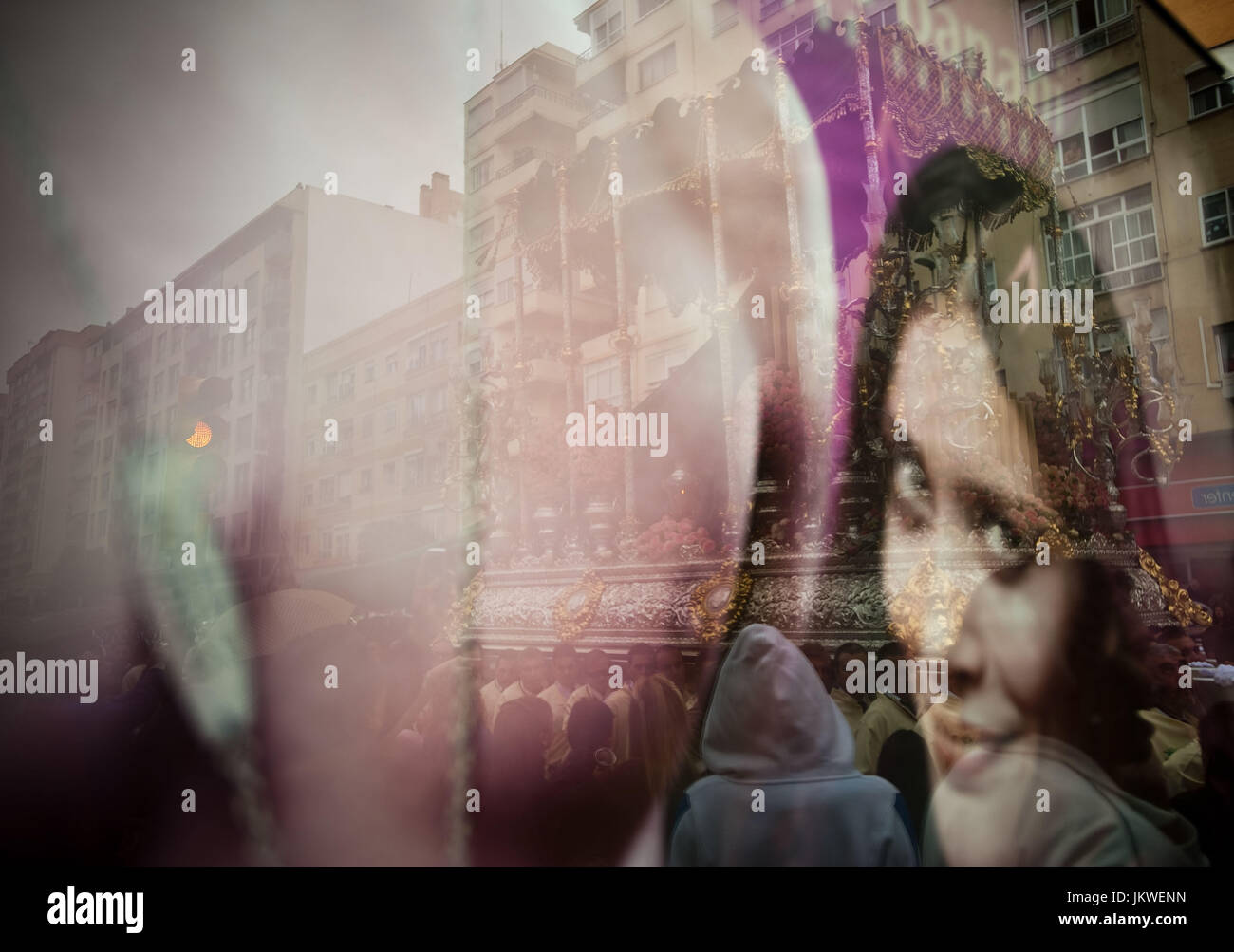Members from the Nueva Esperanza Brotherhood carry the thrones from Jesus of the Sentence and Virgin Maria of Hope on the streets from Malaga during the celebrations of Easter in Spain. Date: 04/19/2011. Photographer: Xabier Mikel Laburu Van Woudenberg------------------- Miembros de la Cofradía de Nueva Esperanza llevan los tronos de Nuestro Padre Jesús de la Sentencia y de María Santísima de nueva Esperanza por las calles de Málaga durante las fiestas de Semana Santa en España. Fecha: 19/04/2011. Fotógrafo: Xabier Mikel Laburu Van Woudenberg.

Image details
Contributor:
Xabier Mikel Laburu / Alamy Stock PhotoImage ID:
JKWENNFile size:
30.9 MB (625.4 KB Compressed download)Releases:
Model - no | Property - noDo I need a release?Dimensions:
3921 x 2755 px | 33.2 x 23.3 cm | 13.1 x 9.2 inches | 300dpiDate taken:
19 April 2011Location:
Málaga, EspañaMore information:
This image could have imperfections as it’s either historical or reportage.
Nothing in Malaga equals the impressive display of the Easter celebrations. Thousands of people convey with the only mission to parade alongside the religious sculptures of the Virgin Mary and Jesus that have been entrusted to their brotherhoods. Year after year the locals show their devotion to the religious images dressing them up in sumptuous dressings and carrying them on the streets in costly decorated thrones loaded on the shoulders of “Nazarenos” (penitents). The first documents about Catholic processions in Malaga appear little after the conquest of the city by the Crown of Castilla and the following conversion to Christianity after overthrowing the Islamic authorities that predominated in the region during seven centuries. The implementation of the catholic religion and the arrival of new settlers from other catholic regions promoted the first processions to support the religious conversion of the general population. This kind of celebrations acquired more relevance after the Trento Council, celebrated between 1545 and 1563, bringing the Catholic Church to enforce the cult to the sacred figures in an attempt to fight against what they considered the heresy of Marin Luther's protestantism. A key factor that gave strength to this image cult was the fact that most of the population was illiterate. During the Baroque Age, new religious brotherhoods are created and receive a major boost with the inclusion of many local nobles in the organizations. At the time, the processions were composed of two main groups, one called “brothers of light” that were eight or ten members in charge of carrying on their shoulders the religious figure mounted on a throne, and the “brothers of blood” that were a comity of penitents that flagellated their bodies during the procession. The other main reason for the growth of the brotherhoods in the Baroque Age was the fact that the cemeteries were property of the church. (...)